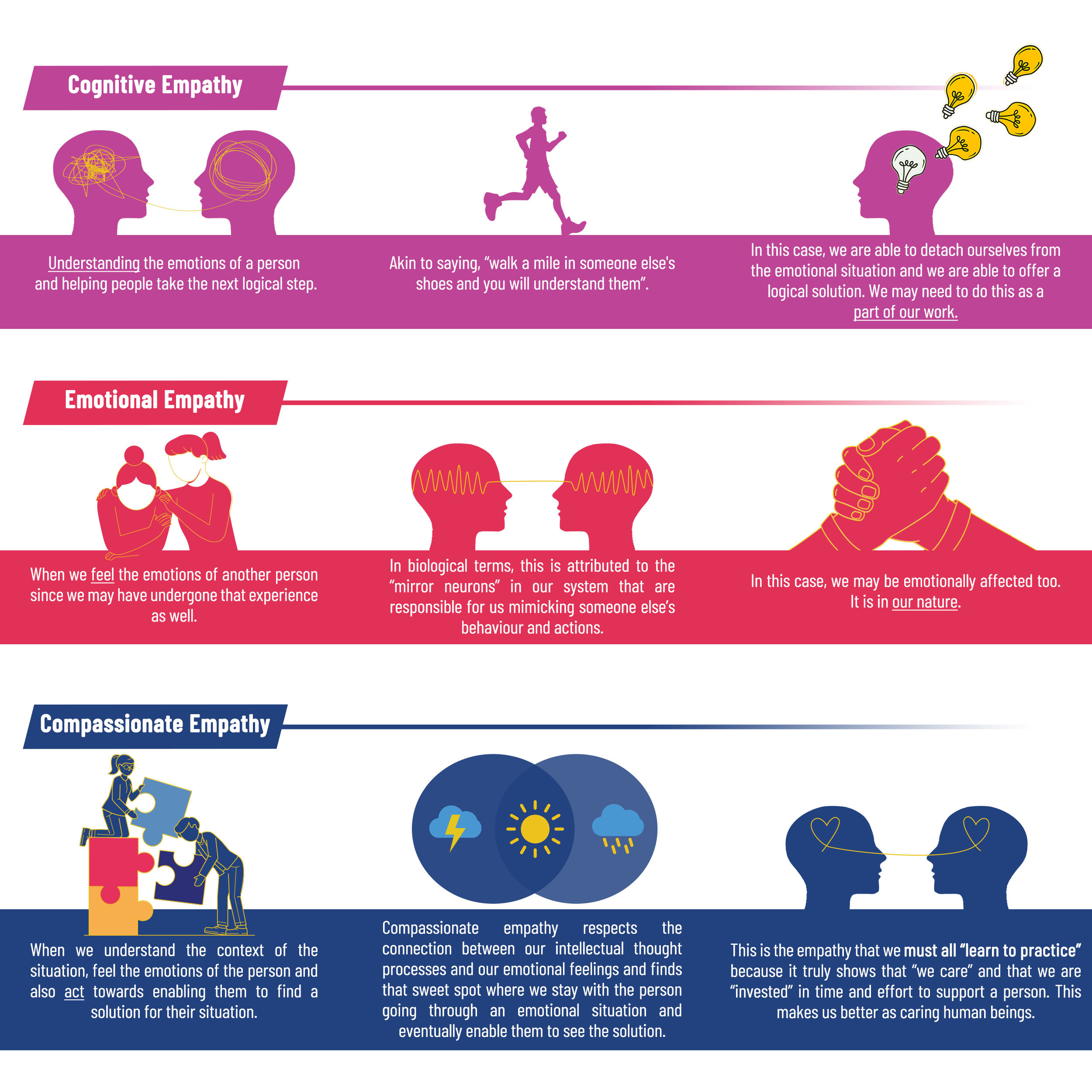If you want others to be happy, practice compassion. If you want to be happy, practice compassion. Dalai Lama
Our world, already afflicted by one of its worst pandemics, is suffering from another disease today: a lack of compassion and understanding towards those who are different from us. As protests rage across streets everywhere for human rights, it makes us wonder about the future of the human race. Are each of us born with empathy or have we lost it along the way? Why are some people less empathetic than others? Why have we not done enough to explore it as a virtue?
Well, there’s good news for the world: empathy can be nurtured. It can be taught and it can be practiced.
Surely, I am not the first one to tell you this. There are numerous news articles and white papers that make a case for nurturing empathy. However, in this post, I will focus on developing it in a learning environment. Let us start by understanding empathy first.
What is empathy?
Simply put, empathy is our ability to understand and share the feelings of another. Many of us would have experienced empathy in our day-to-day situations.
- A colleague would have had a bad day and we would have tried to reason out with them on what happened and how they can think about the next step.
- As children, when we fell ill, we would have seen our parents shed a tear of worry and experience pain themselves.
- We may have tried to salvage a situation when a friend was going through a tough time and would have helped them calm down, assured them of a safe space to share their feelings and then enabled them to find a solution to their problem.
While all these are scenarios where we experience empathy, there is a subtle yet important difference in the way we respond. These responses can be classified into the 3 types of empathy, namely: cognitive, emotional and compassionate empathy.
How do we help young learners develop compassionate empathy?
While understanding the types of empathy and writing an “exam” about it will be an easy thing. It is not as simple to practise this skill in our day to day lives. However, rest assured, it is not difficult to “learn” either. Here are some insightful ways in which we can build compassionate empathy in learners as well as young adults.

Nurturing an inclusive environment
The first step to learn to care is to “be” in a space where the differences in people are not just acknowledged or celebrated, but also deliberately enabled. An inclusive classroom is a perfect space for learning to practice compassionate empathy, since opportunities for doing so are woven into the system. When learners are able to see their friends for “who they are” rather than what they can do or the choices they make, they have already embarked in their journey of being empathetic. Learning facilitators too, at HLC and Beyond 8, talk about how an inclusive classroom makes them more sensitive and caring in their approach and more accepting in their outlook.
Providing a non-judgemental and safe space to make mistakes
Everyone learns through their mistakes. However, many times, we see that learners are berated, punished and ridiculed for their mistakes. By doing so, we are losing out on wonderful learning opportunities to be empathetic. When we provide a non-judgemental and safe space for making mistakes, we end up supporting them, making them feel comforted and helping them learn from the situation. Eventually, we are also enabling an environment where learners don’t have the fear of being judged for their actions.
Enabling a space to have difficult conversations
More than ever before, we seem to have run out of spaces where we can be “ourselves” and “share our deepest fears, beliefs and feelings”. This makes us constantly “act” as someone else just to “fit in”. When we enable a space to have difficult conversations and encourage learners to be open minded about their thoughts and feelings, we are creating opportunities for caring and sharing. In our learning organisations, we see learner-led initiatives focusing on “self-care” where they create spaces for everyone to be themselves. This helps all learners to be comfortable about who “they are” and carry a high sense of “self well-being”. Without a doubt, this is the first step to being compassionate.
Using mindfulness and reflection as a powerful tool for learning
In our daily lives, we seem to be in a mad rush to move from one situation to another without pausing or thinking. However, when we do pause and reflect, we realise that this act alone can change all our future actions. Reflection isn’t something that we do only when a complex situation arises. Reflection has to be a habit in our lives. Helping learners to be mindful in their thoughts and reflective about their actions enables them to pause and come up with alternative ways to react or respond to situations. When they do this for themselves, they are also learning to help others as well. In other words, they are building the skills required for practicing compassionate empathy.
The biggest learning of them all however is to experience the impact of compassionate empathy, believe in its power and hence be excited to offer this joy to others around you as well.
Can you identify situations in your life where you have experienced empathy? Empathy, like anything else, requires practice. The more we practice, the better we get at it. Agree?
References:
Daniel Goleman - Emotional Intelligence A whole new mind - Daniel Pink Empathy can be taught - The efficacy of empathy training: A meta-analysis of randomized controlled trials. Everyone a changemaker - Bill Drayton, Ashoka Foundation The three kinds of empathy A whole new mind
“Empathy is seeing with the eyes of another, listening with the ears of another and feeling with the heart of another.” ~Alfred Alder
